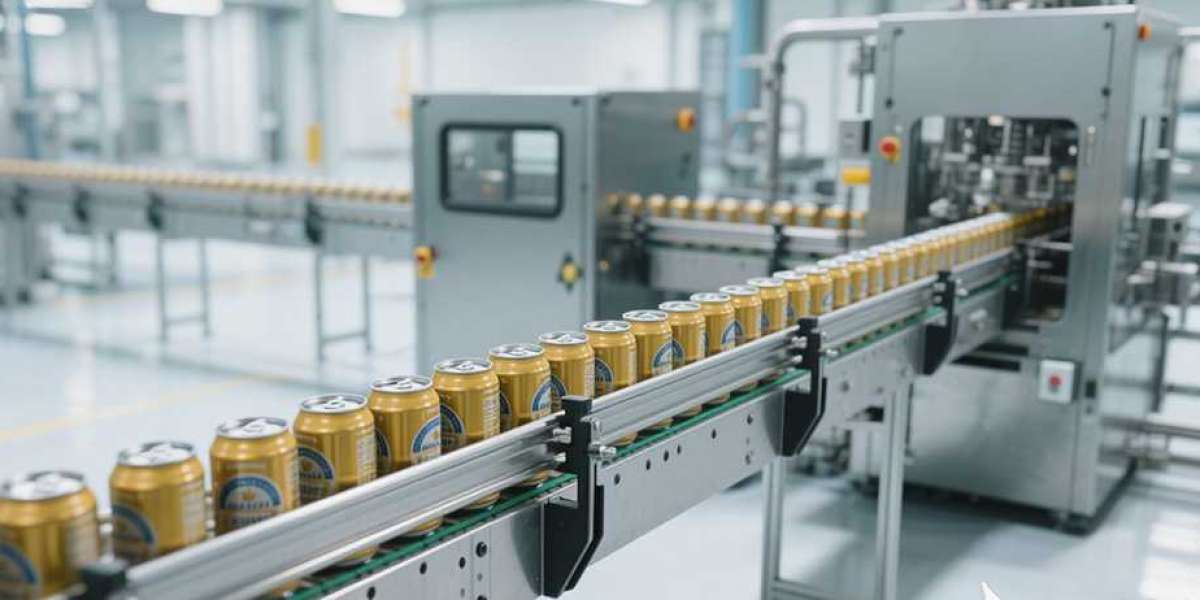For beer producers, selecting the right can filling machine isn’t just about speed—it’s about protecting the quality of your product. Beer is delicate: too much oxygen ruins its flavor, lost carbonation makes it flat, and poor sanitation causes spoilage. The wrong machine can turn a great batch of beer into a waste of time and money. Whether you’re a small craft brewery just starting canning or a mid-sized brand scaling up, follow this guide to pick a can filling machine that fits your needs and keeps your beer at its best.
Start with Your Production Volume Speed Needs
The first rule is: don’t buy more machine than you need. Calculate your daily or weekly production target (in cans) and choose a machine with a matching speed (measured in cans per hour, CPH). Here’s how to match:
- Small craft breweries (500–2,500 cans/day): Go for semi-automatic machines with speeds of 300–1,500 CPH. These are compact (many fit on a tabletop or small floor space) and easy to operate with 1–2 people. A 600 CPH model, for example, can handle 5,000+ cans a week—perfect for local taprooms or small distribution.
- Mid-sized operations (2,500–10,000 cans/day): Opt for semi-automatic or fully automatic can filling machine with 1,500–4,000 CPH. Look for models with 2–4 filling heads to boost speed without the cost of a large line. These work well for regional brands expanding their reach.
- Large producers (10,000+ cans/day): Choose fully automatic can filling machine with 4,000–12,000 CPH. These have multiple filling heads, integrated conveyors, and automatic seaming—ideal for mass production. Just ensure you have the floor space (they need 10–20 square meters or more) and staff to manage them.
Always Pick Isobaric Filling Technology for Beer
Beer’s carbonation is non-negotiable—and the only filling technology that preserves it is isobaric (pressure) filling. Here’s why it’s a must:
Isobaric machines fill cans at the same pressure as the beer’s carbonation (typically 0.2–0.4 MPa). First, they flush the can with CO2 to remove oxygen, then fill it while maintaining pressure. This prevents two big problems: foam overflow (which wastes product) and oxygen pickup (which makes beer taste stale). Never use gravity or vacuum filling machines for beer—gravity lets air mix in, and vacuum sucks out CO2, leaving your beer flat.
Prioritize Sanitary Design to Avoid Spoilage
Beer is a fermented product, so bacteria or residue in the machine can ruin entire batches. Look for these sanitary features:
- Food-grade materials: All parts that touch beer (filling valves, hoses, product tanks) must be made of SUS304 or SUS316L stainless steel. These materials don’t rust, don’t react with beer, and are easy to sanitize.
- Easy-to-clean design: Choose machines with detachable filling heads and smooth, crevice-free surfaces. Hard-to-reach gaps trap beer residue, leading to mold or bacteria. Some models have CIP (Clean-in-Place) systems—they automatically rinse and sanitize the machine with hot water or cleaning solutions, saving hours of manual work.
Ensure Compatibility with Your Beer Can Sizes
Beer cans come in standard sizes (330ml, 500ml, 568ml) and custom options (like 150ml samples or 750ml sharing cans). Your machine should adapt quickly without major overhauls:
- Filling volume range: Pick a machine that covers your current and future sizes. A range of 100ml–1,000ml works for most breweries—you can fill small samples today and large cans tomorrow.
- Can dimensions: Most machines handle cans with diameters 52mm–99mm and heights 80mm–230mm. Check if the machine’s guide rails and clamping systems adjust with simple knobs or levers—no need for tools means faster changeovers between can sizes.
Look for Beer-Specific Bonus Features
These extra features make production smoother and improve beer quality:
- Foam control sensors: They detect excess foam and slow the filling process, reducing waste and ensuring consistent fill levels.
- Precision seaming: A tight, airtight seal is critical—leaks let oxygen in. Look for machines with adjustable seaming rollers that create uniform seals every time.
- Pressure monitoring gauges: Built-in gauges let you check filling pressure in real time, so you can tweak it for different beer styles (e.g., lighter lagers vs. more carbonated IPAs).
Test Before You Invest
Never buy a can filling machine without testing it with your beer. Ask the supplier to run a small batch (50–100 cans) and check:
- Fill accuracy (no underfilled or overfilled cans)
- Foam levels (minimal overflow)
- Seal quality (submerge cans in water to check for leaks)
- Speed (does it hit the advertised CPH without issues?)
The best can filling machine for beer production balances quality protection and practicality. Focus on isobaric filling, sanitary design, and matching speed to your volume—these are non-negotiables. Don’t cut corners on cheap machines that lack these features; they’ll cost you more in wasted beer and repairs. By following this guide, you’ll pick a machine that keeps your beer fresh, your production efficient, and your customers coming back for more.








